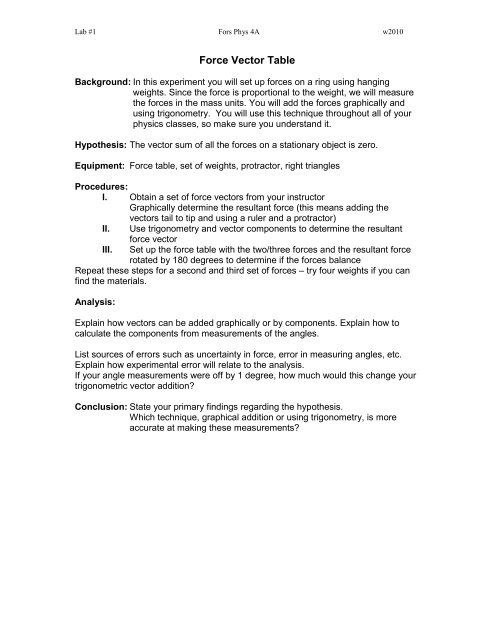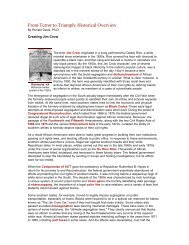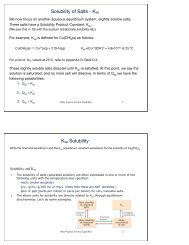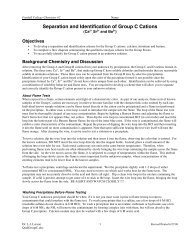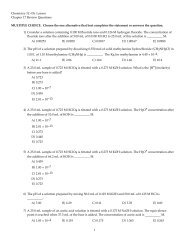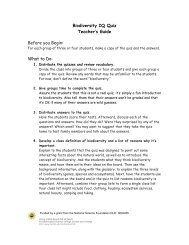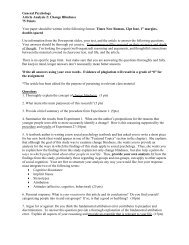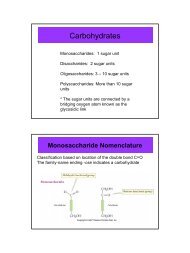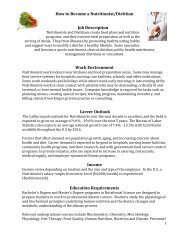Force Vector Table
Force Vector Table
Force Vector Table
Create successful ePaper yourself
Turn your PDF publications into a flip-book with our unique Google optimized e-Paper software.
Lab #1 Fors Phys 4A w2010<br />
<strong>Force</strong> <strong>Vector</strong> <strong>Table</strong><br />
Background: In this experiment you will set up forces on a ring using hanging<br />
weights. Since the force is proportional to the weight, we will measure<br />
the forces in the mass units. You will add the forces graphically and<br />
using trigonometry. You will use this technique throughout all of your<br />
physics classes, so make sure you understand it.<br />
Hypothesis: The vector sum of all the forces on a stationary object is zero.<br />
Equipment: <strong>Force</strong> table, set of weights, protractor, right triangles<br />
Procedures:<br />
I. Obtain a set of force vectors from your instructor<br />
Graphically determine the resultant force (this means adding the<br />
vectors tail to tip and using a ruler and a protractor)<br />
II. Use trigonometry and vector components to determine the resultant<br />
force vector<br />
III. Set up the force table with the two/three forces and the resultant force<br />
rotated by 180 degrees to determine if the forces balance<br />
Repeat these steps for a second and third set of forces – try four weights if you can<br />
find the materials.<br />
Analysis:<br />
Explain how vectors can be added graphically or by components. Explain how to<br />
calculate the components from measurements of the angles.<br />
List sources of errors such as uncertainty in force, error in measuring angles, etc.<br />
Explain how experimental error will relate to the analysis.<br />
If your angle measurements were off by 1 degree, how much would this change your<br />
trigonometric vector addition?<br />
Conclusion: State your primary findings regarding the hypothesis.<br />
Which technique, graphical addition or using trigonometry, is more<br />
accurate at making these measurements?
Lab #1 Fors Phys 4A w2010<br />
<strong>Vector</strong> Mass to be placed on holder (kg)<br />
(Don’t forget the mass of the<br />
holder – need to be added)<br />
A<br />
B<br />
C<br />
D<br />
E<br />
F<br />
G<br />
H<br />
L<br />
M<br />
N<br />
P<br />
<strong>Vector</strong> sum: |A+B|<br />
Angle:<br />
<strong>Vector</strong> sum:<br />
Angle:<br />
<strong>Vector</strong> sum:<br />
Angle:<br />
<strong>Vector</strong> sum:<br />
Angle:<br />
Angle CCW with<br />
respect to x-axis<br />
Graphically Analytically Experimentally


